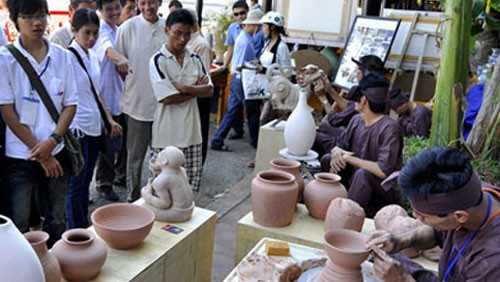Bat Trang ceramic village applies energy saving technology
Bat Trang on the outskirts of Hanoi is one of the best known ceramic villages in Vietnam. The village has recently shifted from coal to liquidized gas fueled kilns to save energy, increase productivity, and reduce environmental pollution. This new technology has also helped local artisans increase the quality and competitiveness of their products.

Bat Trang village used to be seriously polluted and many people contracted respiratory and eye diseases because of the smoke from hundreds of coal-fired kilns. Thanks to the support of the UN Development Program, people there have changed to gas-fueled kilns and their lives have gotten better. Workshop owner Nguyễn Văn Hợp says they have been using this new technology for 3 years: “Since we’ve used gas-fueled kilns, air pollution and production loss have been reduced and our revenue has gone up”.
This new technology was initially the idea of Bat Trang Ceramic Design and Production Company. In 2006, the company successfully designed a chamber to dry their products using waste heat and this technology cut costs in half. It also reduced environmental pollution, shortened the production cycle, and improved product quality. Lê Đức Trọng is the company’s Director: “Our first energy-saving kiln was introduced 10 years ago. It cut energy consumption 40% and shortened our production cycle by 25%”.
An official from the Ministry of Science and Technology, Nguyễn Bá Vinh, says more than 2 million USD has been invested in building 131 gas-fueled kilns in the village since 2007. Vinh says this technology protects workers from hazardous smoke and high temperatures: “We have worked with the Vietnam Environmental Protection Fund to provide village households with preferential loans to build this kind of kiln. We have also cooperated with the Bat Trang Ceramic Association to organize awareness-raising and training programs on this new technology for the villagers”.
Ceramic production in Vietnam has been boosted by the application of new technologies by local businesses, which demonstrates their resolve to gain a larger share of the world market.